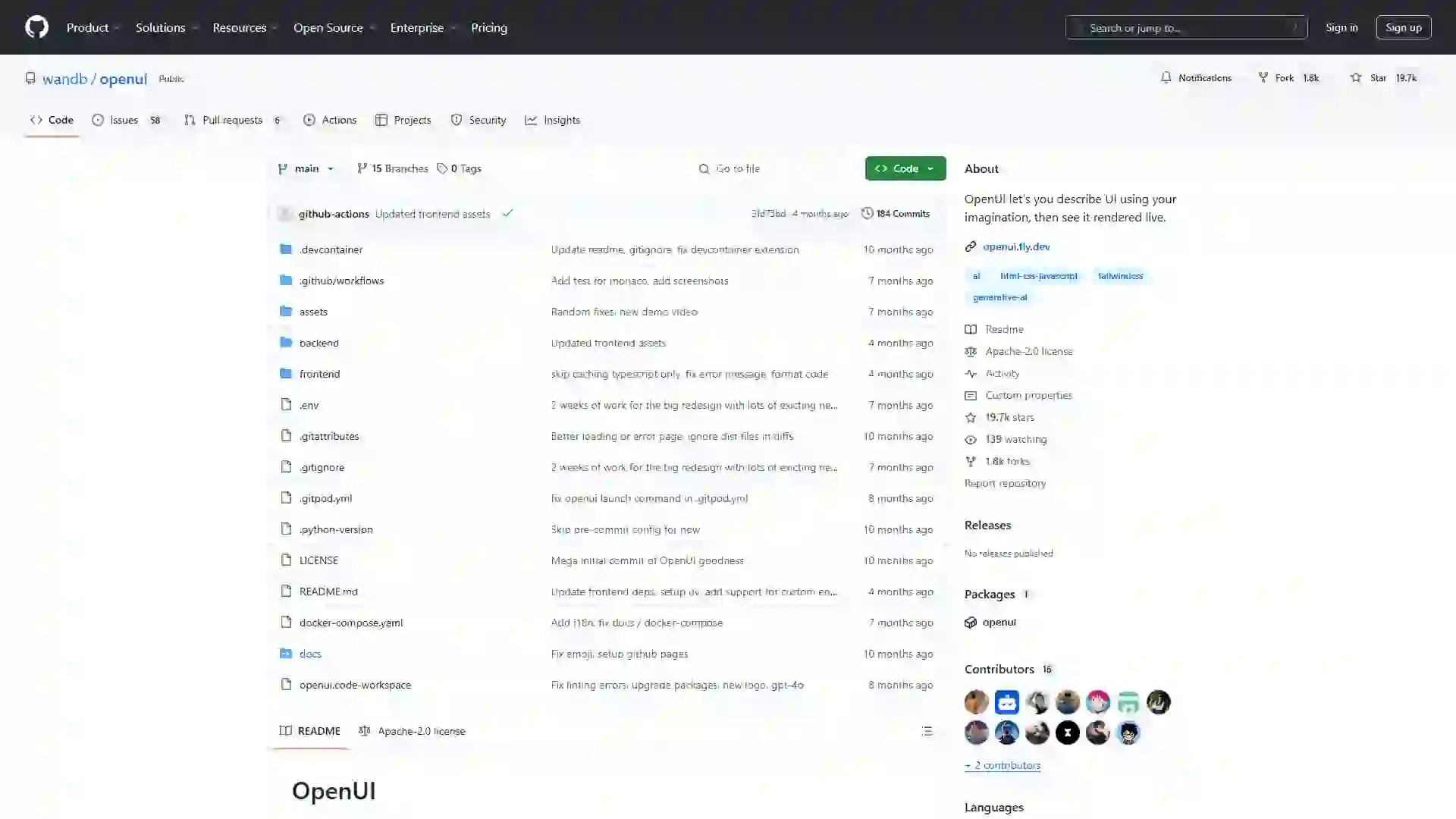- Home
- Development
- OpenUI
OpenUI
📝 Summary
OpenUI is a cutting-edge tool designed to revolutionize the way UI components are built. By leveraging natural language prompts, OpenUI swiftly generates user interface components, significantly enhancing development efficiency. It is akin to v0.dev but offers enhanced flexibility and customization, making it an indispensable asset for modern development workflows.
✨ Features
- Prompt-Based UI Generation: Effortlessly create complex UI components using simple, natural language descriptions. This feature dramatically reduces the manual coding workload, allowing developers to focus on more strategic tasks.
- Highly Customizable: The generated UI components are not static. They can be further customized and fine-tuned to meet the specific requirements of diverse projects, ensuring that OpenUI adapts seamlessly to your needs.
- Open Source Project: OpenUI embraces the power of community collaboration. Its fully open-source codebase allows developers to freely view, modify, and contribute, fostering innovation and continuous improvement.
- Seamless Integration: OpenUI is designed to integrate effortlessly with existing development tools and frameworks. This compatibility ensures that it can be quickly deployed in current projects without disrupting established workflows.
🚀 Use Cases
- Rapid Prototyping: OpenUI excels in scenarios where quick UI prototyping is essential. It enables designers and developers to rapidly validate their ideas, accelerating the innovation process.
- Frontend Development Acceleration: Frontend developers can leverage natural language descriptions to generate UI components swiftly, eliminating repetitive tasks and freeing up time for more creative endeavors.
- Education and Learning: OpenUI is an ideal tool for educational purposes. It helps students and beginners grasp the fundamentals of UI component development quickly and intuitively, making learning more accessible.
⚠️ Limitations
- Dependency on Natural Language Descriptions: The quality of the generated UI components is heavily influenced by the clarity of the input prompts. Unclear descriptions may yield suboptimal results, emphasizing the importance of precise language.
- Learning Curve: Developers unfamiliar with describing UIs using natural language may face an initial learning curve. However, OpenUI provides comprehensive resources to help users become proficient quickly.
- Functional Limitations: While OpenUI is highly capable, its current functionality may not cover all the needs of highly complex projects. The development team is continuously working to enhance its capabilities.
❓ FAQ
Q1: What are the main benefits of using OpenUI?
A1: OpenUI offers several key benefits, including rapid UI component generation through natural language prompts, high customization flexibility, seamless integration with existing tools, and an open-source framework that fosters community collaboration. These features collectively enhance development efficiency and creativity.
Q2: How does OpenUI compare to other similar tools?
A2: OpenUI stands out due to its focus on natural language generation, making it highly intuitive and accessible. Its open-source nature allows for greater flexibility and community-driven improvements. Additionally, OpenUI is designed to integrate smoothly with existing workflows, making it a versatile choice for both beginners and experienced developers.
Q3: Is OpenUI suitable for beginners?
A3: Absolutely. OpenUI is designed to be user-friendly and accessible, even for those new to UI development. Its natural language interface and extensive customization options make it an excellent learning tool. However, developers with more experience will also find it highly valuable for accelerating their workflows.
